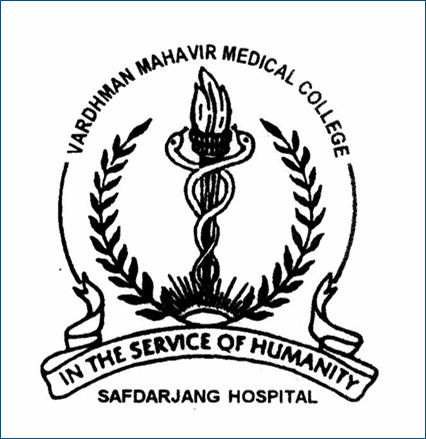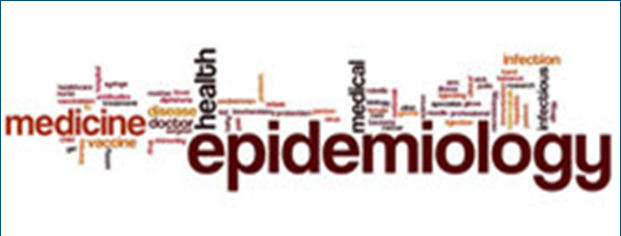Apidsc.in

ASSISTANT PROFESSOR
VMMC & SAFDARJUNG HOSPITAL, DELHI
EULAR CERTIFICATION COURSE IN RHEUMATIC DISEASES
EULAR CERTIFICATION COURSE IN MUSCULOSKELETAL ULTRASOUND
EDITORIAL BOARD AUSTIN JOURNAL OF TROPICAL MEDICINE AND HYGIENE
& PUBLIC HEALTH OPEN ACCESS JOURNAL


INTERNAL MEDICINE
Clinical features
Mechanism of DILI
Role of liver biopsy
Types of drug reactions
Genetic risk factors

"Any liver injury caused by medication or herbal supplements that has led to
biochemical abnormalities or liver dysfunction with the exclusion of other causes."
It may be of 2 types -
Dose dependent - eg. aspirin, acetaminophen

Greater than 1000 medications have been implicated in DILI, most commonly
antibiotics & acetaminophen
Most cases of acute liver failure are due to DILI
Most of the cases of DILI are attributed to a single prescription drug
However, up to 18% have been the result of multiple agents
Dietary supplements have been linked to DILI in 7-9% of cases



Patel et al BMC Clinical Pharmacology
Uppal et al Natl Med J India
Ramesh et al Pharmacoepidemiology and drug safety
S K Acharya et al. Journal of gastroenterology and hepatology.
MECHANISM OF DILI
Hepatic metabolism
Drugs with > 50% hepatic metabolism conveyed a significant risk of ALT
increases, liver failure & mortality related to DILI
Veno occlusive disease
Idiosyncratic reactions
MECHANISM OF DILI - NEWER INSIGHTS
Related to mitochondrial
Emerging role of superoxide
dismutase & glutathione peroxidase
Effect of polymerase Ɣ on
cellular proliferation and non apoptotic cell death
DRUG INDUCED CHOLESTASIS
Acute drug induced cholestasis is defined as
an elevation of ALP at least 2 times the upper limit of normal (ULN) or
an ALT/ALP ratio of < 2, with both ALT and ALP greater than the ULN.
Cholestatic liver injury is defined by isolated elevation of alkaline phosphatase,
which is released by damaged cholangiocytes, thus suggesting injury to the bile ducts
CHOLESTATIC DILI(ALP >2 ULN or ALP/ALT <2 with both ALP and ALT >1 ULN )
1. Antibiotics: amoxicillin-clavulanic acid, erythromycin, trimethoprim-
sulfamethoxazole
2. Anti-inflammatory medications: sulindac
3. Cardiac medications: clopidogrel, ACE inhibitors
4. Neurologic/psychiatric medications: carbamazepine, chlorpromazine,
tricyclic antidepressants
5. Other: azathioprine, anabolic steroids, oral contraceptives
DRUG INDUCED HEPATOCELLULAR INJURY
Hepatocellular injury is defined as ALT elevation of at least 5 times ULN in
combination with a bilirubin elevation of at least 2 times ULN
Such a presentation occurs more commonly
Drug induced hepatocellular injury has been correlated with worse outcome
HEPATOCELLULAR DILI (ALT > 5 X ULN and Bilirubin > 2 X ULN)
1. Antibiotics: ciprofloxacin, nitrofurantoin, tetracycline, trimethoprim-sulfamethoxazole
2. Antidepressants: bupropion fluoxetine, paroxetine
3. Anti-inflammatory medications: acetaminophen, bromfenac, diclofenac, ibuprofen, naproxen
4. Cardiac medications: amiodarone, lisinopril, statins
5. Neurologic/psychiatric medications: methyldopa, nefazodone, risperidone, sertraline, trazodone,
6. Other: acarbose, amatoxin, allopurinol, cimetidine, ketoconazole, halothane, isoniazid,
omeprazole, protease inhibitors, pyrazinamide, quinidine, rifampin, troglitazone
DRUG INDUCED MIXED INJURY
Elements of both hepatocellular and cholestatic injury
Increases in ALT, ALP, bilirubin
MIXED DILI(ALT >5 ULN or Bilirubin >2 ULN and ALP >2 ULN or ALP/ALT <2 with both ALP and ALT >1 ULN)
1. Antibiotics: clindamycin, sulfonamides
2. Cardiac medications: ACE inhibitors, statins
3. Neurologic/psychiatric medications: phenytoin, amitriptyline
4. Other: azathioprine, protease inhibitors reverse transcriptase inhibitors
VENO OCCLUSIVE DISEASE LEADING TO PORTAL HYPERTENSION
1. Antineoplastic agents: busulfan, cyclophosphamide
2. Environmental exposures: arsenic, vinyl chloride, thorium dioxide
3. Other: Vitamin A
➢Manifestations include ascites, varices, and hepatic encephalopathy
PATTERN OF LIVER BIOCHEMISTRY
The pattern of liver injury is defined by R value, [where R =
Hepatocellular pattern: R > or = 5,
Mixed pattern: R >2 and <5,
Cholestatic pattern: R < or = 2
RISK FACTORS FOR DILI
Age - old and young
Alcohol consumption (acetaminophen, INH, nicotinamide & methotrexate)
Genetic polymorphisms (i.e. HLA-B*5701)
RISK FACTORS FOR DILI
Gender - Male in younger patients, females in older patients
History of chronic liver disease (if aspirin, methotrexate, INH, antiretroviral
Dose and duration of treatment
Coincidental metabolic disorders and exposure to other drugs/environmental
PROPOSED MECHANISM/GENETIC RISK FACTOR
AMOXYCILLIN CLAVULANATE
HLA Class II SNP rs 9274407
ANTITUBERCULOSIS DRUGS
NAT 2 POLYMORPHISM
CYP2E1 POLYMORPHISM
DRUG TRANSPORTER GENES (ABCB1, SLCO1B1,
UGTA1 POLYMORPHISM
PREGNANE X RECEPTOR (PXR)
PXR POLYMORPHISM (rs 3814055;C-25385 T)
Bcl-2 DOWNREGULATION
CYP2E1 POLYMORPHISM
NAT 2 POLYMORPHISM
Nutritional status
Fasting predisposes to acetaminophen hepatotoxicity
Malnutrition also increases the risk and severity of hepatotoxicity from drugs
used to treat tuberculosis
Overnutrition (obesity) increases the risk of halothane hepatitis
Increased risk of NASH and hepatic fibrosis among those taking methotrexate,
estrogens, tamoxifen, corticosteroids
Instances of cross reactivity to similar agents are reported with
haloalkane anesthetics (eg halothane, enflurane, isoflurane)
INH and pyrazinamide
Sulfonamides and some COX 2 inhibitors
Some NSAIDs and macrolide antibiotics
Any history of previous adverse drug reaction increases the risk of DILI to other agents
Previous reaction to the same drug is the single most important factor predisposing to unusual
severity of drug induced hepatitis (eg acute liver failure, chronic liver disease)
Other medical disorders
Renal failure - methotrexate induced hepatic fibrosis, tetracycline induced fatty
Renal/solid organ transplantation - hepatic vascular injury with azathioprine
Use of cancer chemotherapeutic agents in BMT/radiotherapy - VOD/SOS
RA & SLE - salicylate hepatotoxicity & sulfasalazine induced hepatitis
HIV/AIDS & SLE - drug reactions to sulfonamides
Halothane, oral corticosteroids cholestasis, valproic acid and phenytoin
reactions are those for which more than one case has occurred in the same family
There are strong associations between human leukocyte antigens (HLA) and
cholestatic drug reactions to amoxicillin clavulanate and tiotropinin
Phenytoin is an example of reactive metabolite syndrome (RMS)
CLINICAL FEATURES
Drugs have become the great mimickers of "natural" liver diseases
nonspecific abnormalities of liver
nodular regenerative hyperplasia
chronic hepatitis resembling
autoimmune hepatitis
acute liver failure
hepatic sinusoidal/venous outflow
obstruction syndromes
benign/malignant liver tumors
Thorough & complete history including information from pharmacy records
Diagnosis is always presumptive as it is based on logistic approach
"Causality assessment" -
a. determine whether link between drug ingestion & liver injury (ADR, liver
histology) is plausible
b. exclude other disorders
The correct diagnosis is facilitated by identifying
specific risk factors for hepatotoxicity eg prolonged fasting, chronic
excessive alcohol intake by a person regularly taking acetaminophen
the presence of extrahepatic features of drug hypersensitivity
clinicopathologic syndrome associated with a particular drug
However, the absence of the "drug signature" should not be used to
exonerate a given drug as the cause of liver injury
Certain criteria used as tools to assist in clinical diagnosis of DILI
DIAGNOSTIC CRITERIA FOR DILI
Hy's Law: AST and/or ALT > 3 X ULN without initial ALP > 2 X ULN and no
other causes of liver disease
Roussel Uclaf Causality Assessment Method (RUCAM): Risk factors, temporal
relationship, exclusion of other causes, concomitant therapy, extrahepatic manifestations, prior reports of hepatotoxicity, rechallenge results
DDW - J: Temporal relationship, eosinophilia, positive lymphocyte stimulation
Clinical diagnostic scale (M & V scale): Temporal relationship, exclusion of
other causes, prior reports of hepatotoxicity, rechallenge results
LIMITATIONS OF DIAGNOSTIC TOOLS
Hy's law is not as sensitive as other parameters as it does not consider the
temporal relationships
RUCAM - can specifically associate liver injury to a particular medication, it is
complicated to administer, and rechallenging patients is rare. Thus modification to this scale has been proposed. A summed score of -10 to 14
Best modification is Digestive disease week - Japan (DDW-J) scale - higher
sensitivity and lower specificity than the original scale
M&V scale - less predictive
Drug induced liver disease is a diagnosis of exclusion: consider the following
Hepatitis viruses
Other infectious agents - Epstein Barr virus, cytomegalovirus, human
immunodeficiency virus, herpes simplex virus, coxiella burnetti
Autoimmune hepatitis: antinuclear antibodies, smooth muscle antibodies,
liver/kidney microsomal antibodies, immunoglobulin G levels
Acute biliary obstruction, exclude cholangitis
Metabolic disorders: Wilson disease, alpha 1 antitrypsin deficiency, risk
factors for nonalcoholic fatty liver disease/nonalcoholic steatohepatitis
Drug induced liver disease is a diagnosis of exclusion: consider the following
Vascular disorders of liver
Bacterial infection
Hepatic metastases
Systemic malignancy or lymphoma
ROLE OF LIVER BIOPSY
Excluding other hepatobiliary disorders
Most strongly indicated when the cause of liver disease remains in doubt
there may be ambiguous evidence of autoimmunity or
the pattern of reaction may be very unusual or
the pattern of reaction may not be previously reported for the drug in question
persistence of abnormal liver biochemistries
in case of continued use and contemplated rechallenge
HISTOLOGICAL CHANGES INDICATING DILI
Zonal lesions, including necrosis and/or steatosis
Microvesicular steatosis (often results from mitochondrial injury)
Necrotic lesions of disproportionate severity of the clinical picture
Mixed hepatitis and cholestasis
Destructive bile duct lesions
HISTOLOGICAL CHANGES INDICATING DILI
Prominent neutrophils and (in later stages) eosinophils (>25%)
Vascularity of hepatic tumors - sinusoidal dilatation, peliosis
Florid steatohepatitis - resembles alcohol related steatohepatitis more than
typical "primary" nonalcoholic steatohepatitis
Appropriate use of drugs (nonpharmacologic approaches, optimal choice of
agents, avoiding polypharmacy where possible, avoiding excessive dosage)
Restricted availability and blister packaging of OTC medications
Physician and public education about possible drug side effects and about
how to recognize and what to do about them
Monitoring for adverse drug reactions
LFT monitoring - agents for which LFT monitoring is strongly endorsed eg
methotrexate, INH, etretinate and other synthetic retinoids, ketoconazole, anti cancer drugs and prolonged therapy with minocycline
Drug should be stopped if ALT > 5 X ULN
but any abnormality of serum bilirubin/albumin/prothrombin time & the
presence of any symptoms are clear indication to stop therapy
Most important - early recognition & discontinuation of putative agent
At each visit patients should be warned to report any untoward new symptoms
With possible ADR, physicians should immediately check LFT to document
Most ADR will resolve spontaneously, rapidly & completely
Drugs with prolonged half life are associated with protracted hepatic ADR
eg Amiodarone, etretinate, ketoconazole & hypervitaminosis A
Aspiration of stomach contents to remove unabsorbed drug - acetaminophen,
metals & and toxic mushrooms
Use of charcoal/resins/osmotic cathartics unlikely to be effective
Chelating resins, hemodialysis, forced diuresis - not effective for most
Largely supportive, except when acetaminophen/Amanita mushroom
poisoning is suspected for which antitoxins are available
Testing of drug levels may be indicated in dose dependant hepatotoxicity
Hospitalization in case of severe reactions - repeated vomiting, deepening
jaundice & development of laboratory/clinical features of liver failure
Early transfer to a liver transplant unit before the worsening (bleeding, HRS,
hepatic encephalopathy) of the patients
ROLE OF CORTICOSTEROIDS
DILI associated with vasculitis (eg allopurinol, sulfonamides)
Some cases of drug induced chronic hepatitis
When D/D between AIH & drug induced chronic hepatitis remains in doubt
"Steroid whitewash" - short course of corticosteroids to hasten recovery in
persons with prolonged drug induced cholestasis
A pragmatic approach is to observe the course for 3-6 weeks after stopping
the drug (unless there is evidence of further deterioration), reserving corticosteroids for cases in which there is failure to show clinical or biochemical improvement
UDCA used with success in patients presenting with cholestatic liver injury
attributed to amoxycillin-clavulanate, flucloxacillin, flutamide, cyclosporin
Dose of ursodeoxycholic acid (15 mg/kg body weight)
During prolonged cholestatic reactions fat soluble vitamin deficiency should
Treat pruritus: consider emollients, diphenhydramine, bile acid resins, selective
norepinephrine reuptake inhibitors
MANAGEMENT- ACETAMINOPHEN POISONING
Administer N Acetylcysteine if elevated AST or ALT or detectable serum
acetaminophen levels, consider IV administration if presentation is > 10 hours after ingestion or if vomiting precludes oral administration
Continual observation and psychiatry consult if intentional overdose
MANAGEMENT - MUSHROOM POISONING
Administer silibinin
Administer high dose Penicillin G
Consider administering N acetylcysteine or cimetidine
As of now, ALT remains the gold standard to predict DILI
However, ALT is not the ideal biomarker as it merely reflects injury after it has
A truly predictive biomarker identifies at risk patients prior to the initiation of
potentially hepatotoxic drug therapy (eg. HLA B*5701 & abacavir)
Research in proteomics, metabolomics, transcriptomics & pharmacogenomics
may find clues in accurate prediction of DILI
Genetic predispositions recently identified for flucloxacillin and lumiracoxib
Greater than 1000 medications have been implicated in DILI
Greater than 1 in 100 hospitalized patients are diagnosed with DILI
DILI is responsible for greater than 50% of cases of fulminant hepatic failure
Drug induced hepatocellular injury carries a worse prognosis than cholestatic
Management includes withdrawing the offending drug, administering proven
antidotes when appropriate, symptomatic treatment, and monitoring of biochemical tests
Early recognition of DILI and subsequent referral and transfer to a transplant
center can be life saving.
In most cases, biochemical resolution of DILI occurs within 60 days
Hepatotoxicity remains an important cause of drugs withdrawn from market
Proteomics, metabolomics, transcriptomics and pharmacogenomics may help
in the accurate prediction of DILI in future
Source: http://www.apidsc.in/pdf/Dr_Sameer_Gulati.pdf
Spatial Approach of Wildlife Diseases Fifth symposium of the Belgian Wildlife Disease 18 October 2013, CODA-CERVA, Tervuren Organizing and Scientific Committee: Paul Tavernier Stefan Roels Paul Heyman Alexandre Dobly Leen Claes Kristof Baert
Doryx (doxycycline hyclate) Capsule, Delayed Release Pellets To reduce the development of drug-resistant bacteria and maintain the effectiveness of DORYX® and other antibacterial drugs, DORYX should be used only to treat or prevent infections that are proven or strongly suspected to be caused by bacteria. DESCRIPTION DORYX Capsules contain specially coated pellets of doxycycline hyclate, a broad-spectrum antibiotic synthetically derived from oxytetracycline, in a delayed-release formulation for oral administration.







